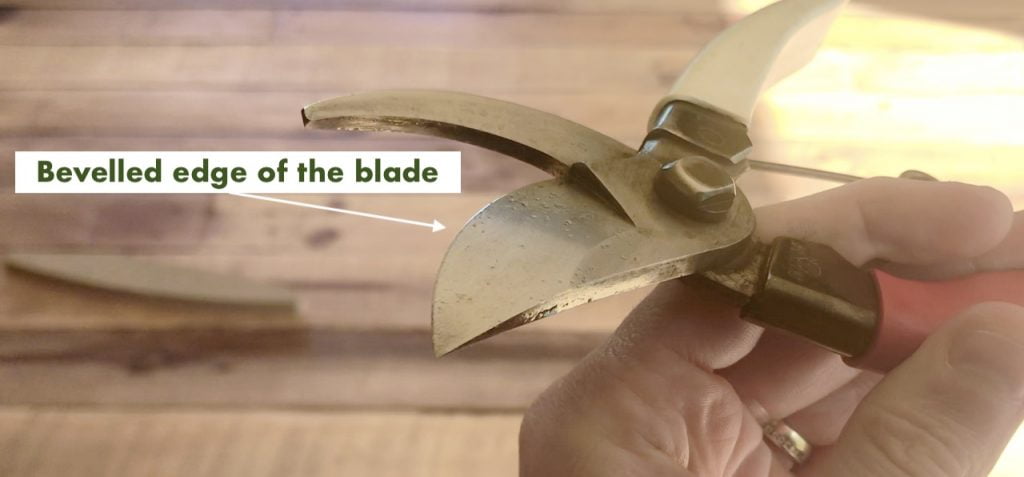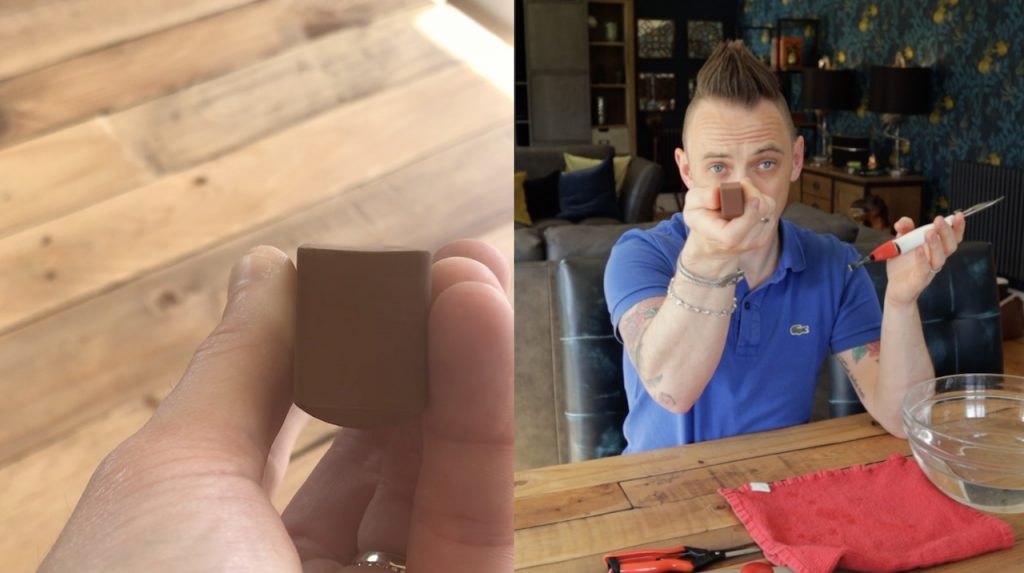How to sharpen secateurs
 Lee Burkhill: Award Winning Designer & BBC 1's Garden Rescue Presenters Official Blog
Lee Burkhill: Award Winning Designer & BBC 1's Garden Rescue Presenters Official Blog

When I first started gardening many moons ago, I never saw the importance of sharpening tools like secateurs. How bad can pruning cuts be from a less-than-perfect set of secateurs? Well, I had a pretty bad experience early on in my career. After using blunt snips on one poor shrub, I subsequently lost it to an infection from badly made cuts. I've sharpened my secateurs religiously ever since.
Sharp tools make cleaner, neater and easier cuts. They also stop the spread of disease and make your job as an awesome gardener even easier. This guide is going to show you how to correctly sharpen secateurs with a sharpening stone. It's really not that difficult once you have the correct technique. Let's get sharpening!
First things first, we need to ensure that our secateurs are clean before we sharpen them. if you try and skip steps you'll end up with uneven sharpening, a ruined sharpening block and plenty of drama. So take your secateurs to a sink and give them a good scrub down.
I use a crean mate from Japan (spelt crean not clean) which is an abrasive sponge that helps me remove any sap or gunk that's built up on the secateurs. I wet it first and then give them a scrub and the marks and debris quickly vanish.

You can use wire wool or a pan scrub, which is a bit more brutal. Use clean water only to remove the sticky substances. I avoid detergent or soap as they can remove the grease from the secateur hinges, causing them to stick and behave erratically. In this case, less is more, so just stick with clean water.
This guide is going to mainly focus on bypass secateurs, the kind where the blade passes over the other arm. This is because they are the most popular and adaptable of secateurs when compared to anvil pairs, where the blade meets and crushes into a plate.
Bypass secateurs nearly always have a bevelled blade making sharpening a bit tricky for the uninitiated. However, once you have the right tools and technique it's relatively straight forward.

It's the bevelled/slanted side that needs the sharpening. You can see this above.
Did you know that you can take my course and learn how to become a Garden Ninja yourself? Click here for details
This helps lubricate it and makes the whole process far easier. Place it in a tub or bowl of water until the bubbles stop escaping.

The left hand is for right-handed people, and the right is for left-handed.
Take the sharpening block - the one I use in the guide is concave, so you want a slightly curved edge against the blade. If using other sharpeners, you will want to hold the sharpening block at a 30-45-degree angle against the blade. The concave ones seem to do this naturally due to their shape.
Try and keep this angle as consistent as possible so you get a uniform sharp edge.

In clean, smooth movements, pass the sharpening block along the blade from edge to edge, working outwards. Make sure you use the entire length of the sharpening stone and blade for a smooth, clean blade. Repeat this movement for 2 mins on the bevelled side.

Lastly, you now need to remove the 'burr' from the other side. These are abrasive fragments of metal, probably unnoticeable to the human eye, that can cause tears on plant matter. Using the flat edge of the sharpening stone, make two clean flush movements across the area to remove this.
NB: If you do more than this, you can dull the blade you've just sharpened!

I prefer to use whetstones, not because you coincidentally wet them but whet means to sharpen. ie to whet (sharpen) your appetite! There are all sorts of other tools and files out there that you may use. However, I find these concave stones really intuitive once you have the technique and you get a better sharper finish.
I also find you have a better understanding of what you're doing rather than just grinding the blade away, hoping it's sharper afterwards.
The coarseness of the sharpening implement affects how fine the end result on the blade. The lower a coarse the rougher the impact. For damaged tools, a rougher, coarser file is necessary to remove this damage. You then work your way up, refining the edge.
For most average-condition secateurs, I'd recommend using the 1000 coarse types.

This 1000 coarse above is perfect for regular sharpening.
After sharpening the secateurs, I always oil the blades with camellia oil. This helps keep the blades lubricated for smooth cuts and protects them from sag and rust. I find oiling them to be a really good protective layer, making cleaning and future sharpening really easy.
I have an oil dispenser that allows a small amount of oil to be rubbed into the blades. If you don't have one of these, use a small drop of lubricant, WD40, or even clean cooking oil, and wipe on sparingly with a clean cloth. You don't want them dripping!

This all depends on how much you use them. I use mine daily in my gardening practice. So, I sharpen mine weekly. If I've just hard pruned a shrub I will sharpen them straight after finishing this intensive task.
If you're only using your secateurs a few times a month, then a once a month sharpen may be sufficient. Use your experience and common sense. It's better to have the sharpened more than less frequently in my experience!
It may seem pedantic of me but keeping your secateurs clean and sharp really is in your garden's best interests. A solid, sharp pair will cut cleanly through all sorts of plant matter, saving stress on your wrists and your plants.
Taking a few minutes periodically to sharpen them is actually a really relaxing task to do. So hopefully, now you know how you'll be keeping your snips super sharp to reduce garden drama when pruning.
If you have questions or comments on sharpening secateurs why not let me know below? You can Tweet, Facebook or Instagram me. You can also follow me on Youtube where I’ve got plenty of garden guide vlogs!


You must be logged in to post a comment.






JOIN THE NINJAS

Be the first in line for new Guides, Discount codes and Offers
Where can I buy sharpening tools for the sequester sharpening?
You can buy the Niwaki sharpening stone here. https://www.amazon.co.uk/dp/B07VHD5D5C/ref=cm_sw_r_as_gl_api_gl_i_83SNR010X0XQE6QBCQ03?linkCode=ml2&tag=gardenninja-21 (This is an affiliate link so if you do choose to buy receive a small commission that helps keep this blog free to use!)